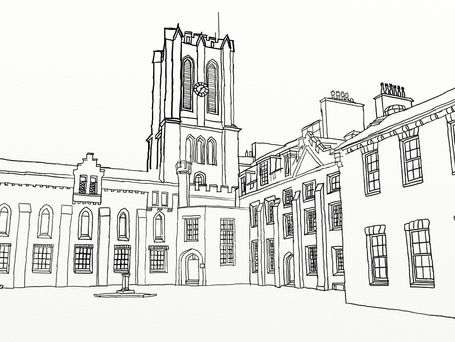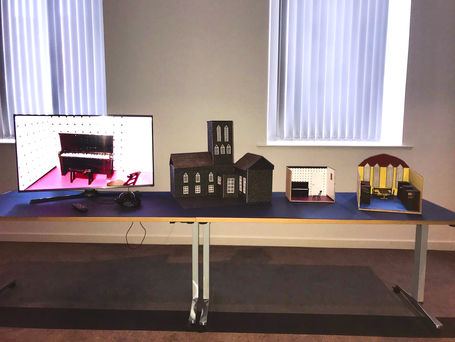Time, space, memory
The studio theme in this semester is time, space and memory. Thinking these three words, reminds me of my college life in King William’s College. The college is very special for me because it is the place that I stayed when I first came to the UK.
King William’s college has a very long history that can trace back to the 1833. So the college itself is an evidence of time. As it is a boarding school, I was living and studying at the college for two whole years, which is like a second home to me. When I spent more and more time at the college, I created more and more association with the place, as well as the space that I was interacting with. Meanwhile, lots of unforgettable memories were bounded within the college, including my friends, my teachers, and my life.
The project includes two interior models, one exterior model and a video that links them together. I hope I can show my audience the experience and memory that I had through the models and video, also reminding their own college lives in order to trigger their own memories.

Thoughts & Process
Since these unforgettable memories were bounded within the college and the space, the project is based on making miniature model of the college, trying to recreate the familiar scene from my memory and other resources. There are three models in the project, an exterior model of the college outline, then two interior models of the music room and the Walker Library. After creating three major models, I decided to use film to link three of the models together, giving my audience a better glance to my old school life. The filming started from the exterior model, giving the impression of the college. Because there are lots of windows in the building, then I zoomed in one of the windows and link it to one of the interior rooms that I made. Bringing the view from the outside college, to its inside facility. There will also be another video that recording the entire model making process, as a documentary of the work.
There were some difficulties during the making process. For example, I was first planning to use 3D printing to print out all the windows and doors for the exterior building model. After realising the printing would take too long and our technician would not be able to make them on time, I had to make all the windows by hand in my own way. The 3D printing window prototype was detailed and stylish, but the windows that I made was simplified and straight forward, considering there was a time limit. Except from the windows making, I was stuck at deciding what material I should use to make the wall of the building. Since the building has a long history, the wall should be old and rough and have uneven bricks on it. Clay was the first material that I thought about, but it is heavy and very hard to control it not to deform during drying. Then I tried with 3D printing the wall pieces and glue them together. It was not ideal because both the 3D printing wall was too thin to give enough texture of the wall, and the piece’s edges were uneven, making it unlikely to glue them seamlessly. However, I found out a method that using foam board and cutting each brick on the board to make the wall. It was successful as the whole board was lightweight and easy to be put together, the texture of the wall was rough, and full of historical trace with the craps and holes on it.
There are two main artists that influent my work significantly. The first artist is Alan Wolfson, who is a miniature artist from American. His miniature models are mainly about the daily scene from New York City, such as subway, fast food restaurant and terrace on the building. Wolfson’s models are attractive not only because the details in the models are so realistic and abundant, but also the details guide the audience into the story of the scene. There is no human figure in the models, but there is information that indicates human activities, like a half-eaten burger, some tips on the table and trash along the street corner. Wolfson inspired me to use detail to make the scene alive and show a narrative along with the model, telling the story to the audience.
Another artist is Runa Islam, who is a Bangladesh-British based visual artist and filmmaker. She was a nominee at the Turner Prize in 2008 and well known for her film works. One of her film, Scale (1/16 Inch = 1 Foot) gave me idea about filming the models I made. The Scale was filming both the actual building and actors, and stage set with the building model. Islam was trying to explore the differences and connections between the actual and the artificial. In the video, there are scene shift from actors at different role and actual building to miniature model. These switches make us to re-examine our surrounding and understand more of our physical environment.












